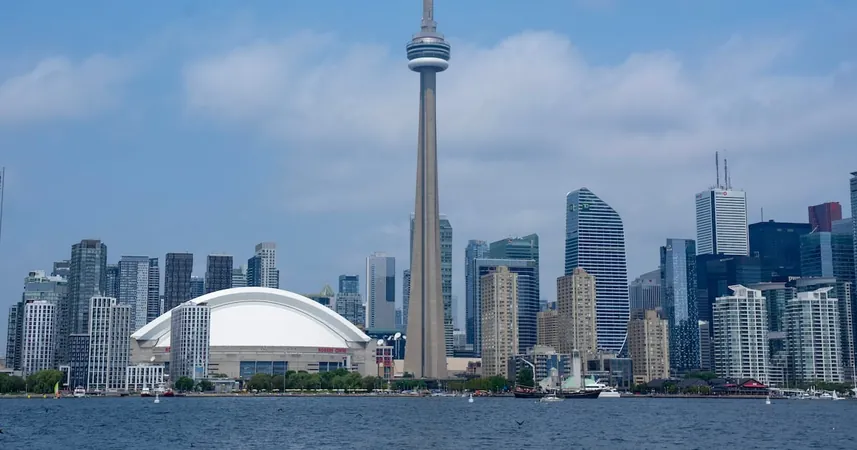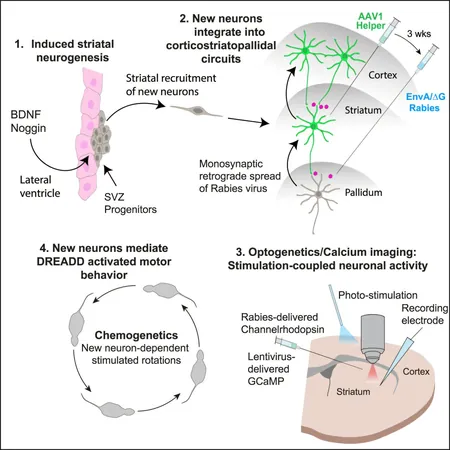
Toronto's Population Surges Past 7 Million: What This Means for the Future
2025-01-18
Author: Liam
Toronto and its surrounding areas have officially crossed the remarkable population milestone of 7 million, as reported by Statistics Canada.
With nearly 300,000 newcomers arriving in just the past year, this surge proves Toronto's status as a prime destination for residents.
As of July, the Greater Toronto Area (GTA) boasts a population of over 7.1 million.
This marks a nearly four percent increase from the previous year’s count of around 6.8 million.
This growth rate significantly outpaces the national average of three percent and compares favorably against other Canadian census metropolitan areas, which have seen growth rates of 3.5 percent.
What You Need to Know About Toronto’s Expanding Borders
The Toronto Census Metropolitan Area (CMA) encompasses a vast 5,902 square kilometers stretching from Lake Simcoe in the north to Lake Ontario in the south, and from Ajax in the east to Oakville in the west.
This region's size contributes to its diverse population, and the recent data sheds light on several key trends driving this rapid growth.
External Migration is the Primary Factor
Matti Semiatycki, a prominent geography professor at the University of Toronto, highlights that a significant portion of this population increase can be attributed to external migration, as opposed to people moving within Canada.
The influx of newcomers poses important questions about what draws people to such urban centers.
According to the report, the notable growth in Toronto, along with Montreal and Vancouver, primarily arises from an increase in non-permanent residents (NPRs), even as new immigrant numbers have plateaued compared to previous years.
Notably, about a quarter of the nearly 500,000 new immigrants arriving in Canada have chosen to settle in Toronto.
Semiatycki explains, “Our economic growth hinges on immigration. Almost all our recent growth derives from individuals arriving from abroad.”
The Outflow: Are Torontonians Leaving?
Interestingly, the report also indicates that approximately 10,000 more residents left the Toronto region for other provinces than those who moved in.
Alberta has notably benefited from this inter-provincial migration, welcoming about 40,000 new residents.
Economists warn that the federal government's plans to reduce immigration targets could pressure Toronto's economy since newcomers have been vital contributors to job creation and overall economic dynamism.
“Newcomers have been an essential source of growth in terms of employment,” Semiatycki remarked, noting that Canada has historically faced productivity challenges largely mitigated by in-migration.
The Multifaceted Challenges Ahead
The economic boom prompted by this population increase is expected to exacerbate existing challenges, including housing affordability, healthcare access, education, and overall quality of life for residents in the GTA.
Semiatycki emphasizes the consistent struggle to align infrastructure and community services with the rapid growth of the population: “We have struggled to match growth with the infrastructure and services necessary to build cohesive communities.”
A Record-Breaking Surge in Population Growth
Data trends from the past five years reveal a slow but steady population increase in the Toronto region, climbing from 6.4 million in 2019 to 6.5 million in 2022.
However, the past year has seen numbers soar dramatically, with an increase of over 250,000 people.
In total, more than 500,000 individuals have made their way to the Toronto CMA in the span of just two years, signaling a dramatic shift and foreshadowing the ongoing evolution of one of Canada's largest metropolitan areas.
Conclusion
The implications of this population expansion are profound, and stakeholders at all levels will need to adapt to meet the rising demands of this vibrant and diverse urban landscape.
Will the city be able to keep pace with its booming population? Only time will tell.









 Brasil (PT)
Brasil (PT)
 Canada (EN)
Canada (EN)
 Chile (ES)
Chile (ES)
 Česko (CS)
Česko (CS)
 대한민국 (KO)
대한민국 (KO)
 España (ES)
España (ES)
 France (FR)
France (FR)
 Hong Kong (EN)
Hong Kong (EN)
 Italia (IT)
Italia (IT)
 日本 (JA)
日本 (JA)
 Magyarország (HU)
Magyarország (HU)
 Norge (NO)
Norge (NO)
 Polska (PL)
Polska (PL)
 Schweiz (DE)
Schweiz (DE)
 Singapore (EN)
Singapore (EN)
 Sverige (SV)
Sverige (SV)
 Suomi (FI)
Suomi (FI)
 Türkiye (TR)
Türkiye (TR)
 الإمارات العربية المتحدة (AR)
الإمارات العربية المتحدة (AR)